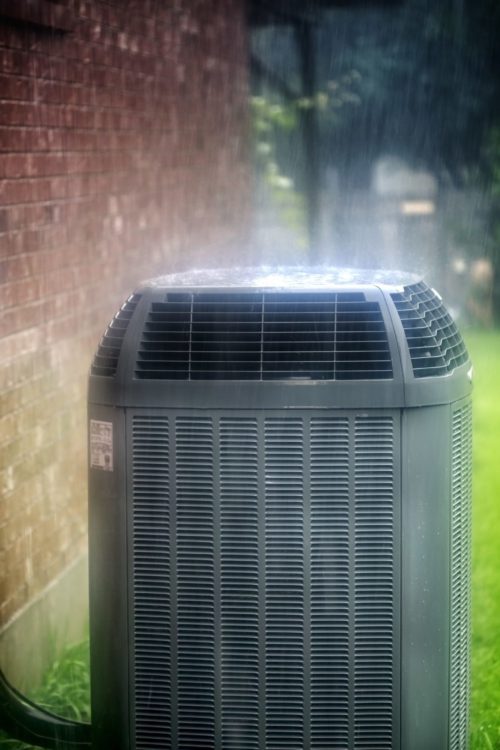
A heat pump is an excellent option for keeping your home cool in the summer, and these units can also help ensure your home stays warm during the cold winter months. That being said, one of the most common questions we’re asked about heat pumps is whether they are more effective at cooling or heating. The answer to this question really depends on the specific conditions the unit is operated under. Heat pumps are equally effective at cooling and heating during typical summer and winter conditions, but their heating effectiveness can suffer somewhat when the outdoor temperatures get too cold. To understand why this is, it’s necessary to look in detail at how heat pumps cool and heat and what limitations these units have when heating.
How Heat Pumps Cool
In terms of energy efficiency and cooling effectiveness, there is zero difference between a heat pump and a standard central air conditioner. Both types of units work the same way by using a cold refrigerant liquid to capture and remove heat from the air inside a home. As long as you are comparing a heat pump and a central AC that are the same size and have the same SEER (Seasonal Energy Efficiency Performance) rating, both units would produce the same number of BTUs (British Thermal Units) of cooling and use the same amount of energy.
How Heat Pumps Heat
The real difference between heat pumps and other HVAC units is in terms of how they heat. Most heating units directly convert energy into heat. A gas or oil furnace burns fuel to produce heat, whereas most types of electric heating convert electrical energy into heat energy. Heat pumps work differently as the electricity they consume isn’t turned into heat and instead is used to transfer heat from one place to another, and this heat transfer process is what makes a heat pump far more energy efficient than any other type of heating unit.
The most efficient gas furnaces are around 98% efficient, which means that only 2% of the fuel they burn is wasted due to heat loss. Electric heaters are always 100% efficient since they directly convert electricity into heat. Heat pumps, on the other hand, are typically as much as 200 to 300% efficient as the heat transfer process allows them to more effectively make use of the electricity they consume.
The only issue is that a heat pump’s efficiency does tend to decrease the colder the outdoor air temperature is since colder air contains less heat energy. However, you may be surprised to learn that there is still quite a bit of heat energy even in air that is well below zero degrees, which is why some heat pumps can continue to perform effectively even in temperatures as low as -20 Fahrenheit.
When heating, a heat pump reverses the flow of refrigerant so that it can absorb heat energy from the air outside and use it to heat the air inside. Inside the heat pump is a copper coil filled with cold, liquid refrigerant. The heat pump’s internal fan pulls in air that is blown over the coil, and this process works so that much of the heat energy from the air is absorbed by the refrigerant. When the refrigerant absorbs this heat energy, it transforms from a cold liquid into a hot gas. The refrigerant then passes through the compressor, which increases the refrigerant pressure and makes it even hotter.
The hot refrigerant then flows into another coil located within the indoor air handler. When the heating system is running, the HVAC blower constantly draws cool air in and forces it over this coil. The refrigerant then naturally releases the stored heat energy into the air thus instantly raising the air temperature.
Why Heat Pumps Often Require an Auxiliary Heat Source
Even though there is still quite a bit of heat energy in colder air, most heat pump systems still require a secondary heat source for a few different reasons. The first is that the rate at which a heat pump heats tends to slow down quite a bit the colder the outdoor air temperature is. This typically isn’t an issue when the indoor temperature is only a few degrees lower than the thermostat setting.
However, if the temperature is 8-10 degrees below the thermostat setting and the outdoor temperature is below freezing, it will often take the heat pump more than an hour to fully raise the temperature. In this situation, the system would typically switch to the secondary heat source to raise the temperature more quickly, and then switch back to the heat pump whenever additional heat is needed.
The other issue is that heat pumps need to occasionally switch over and run in defrost mode during cold weather to prevent ice from forming on the outdoor coil, and the unit cannot produce any heat when defrosting. In freezing conditions, the unit may need to defrost for around 15 to 20 minutes per hour. This is where the secondary heat source comes in as the system will switch over to this source so that you still have heat when your heat pump is defrosting. All this being said, heat pumps are still extremely effective at heating and will usually lower your heating costs compared to other types of units even if your system needs to occasionally rely on the secondary heat source.
If you have any questions about heat pumps, the knowledgeable team at Heatwave Heating & Cooling is here to help. We specialize in installing, repairing and maintaining heat pumps as well as furnaces, central air conditioners, boilers and ductless mini-splits, and we can also help with duct cleaning and air purification. For more information or if you need any HVAC service in the Amherst area, give us a call today.

